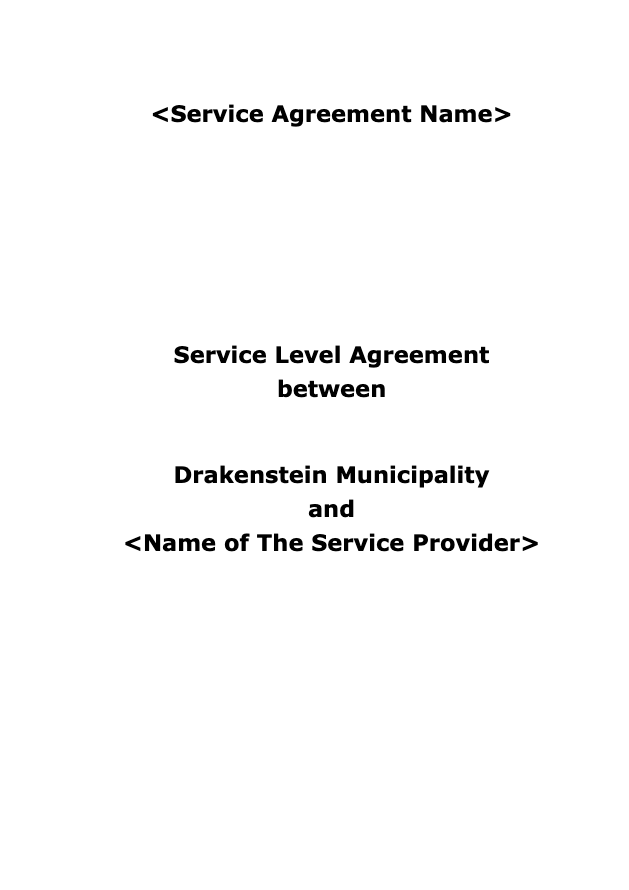A service level agreement is a legal agreement that defines the guidelines and expectations a service provider and a vendor will operate within, in order to maintain an agreeable and smooth relationship. SLA templates can be between a service provider and a customer, providing all the necessary information into the template, and performance standards are discussed/outlined.
What is a Service Level Agreement Template?
An SLA template establishes the metrics of how a service is to be measured, as well as stating the ramifications in the event of infringement of the agreement. The template is aligned with the service provider’s business objectives, as the collaboration with any vendor should be aligned with them.
Service level agreement samples pull together information on contracted services, and the agreed-upon terms of vendors with a business. SLA. They declare metrics, responsibilities and expectations, so that in the event of issue with the service, neither party can plead ignorance or misunderstanding on what was expected of them to deliver.
After a sla is signed, the agreement continues to carry out other functions. An sla template serves as a guide that can be referred to when monitoring and identifying where conditions of the agreement can be improved, and continuing to ensure that the service provider-vendor relationship is still fitting within the confines of the service level agreement.
Do’s and Don’ts Checklist for a Service Level Agreement
A SLA must be built and maintained on a foundation of common understanding. Here are a few elements to take note of, and steer clear of respectively;
Do’s
- Steer clear of ‘earn back clauses’
This gives the service provider the right not to pay service level credit if the desired level of performance is achieved later on.
- Providing a grace period
A learning period at the start of the SLA that will serve as baseline data that financial penalties will not apply to
- Set realistic expectations
Setting attainable metrics important to the business outcome of utilizing the service provided, and candidly state what the tolerances will be for failure.
- Be precise
A detailed SLA that states how performance shall be calculated and evaluated, and in what time frame.
Don’ts
- Considering financial penalties as means to save costs
A penalties clause should not be leveraged, it is meant to encourage the desired service provider behavior,and not to trigger credits.
- Strict SLA adherence does not always guarantee success
Decision-makers should take the initiative to improve and amend a good SLA, if its full potential is not being realized.
- Overlapping metrics
The service level agreement should have its different aspects measured and monitored , stimulating good visibility in the agreement.
- Leaving your clients in the dark
Failing to let a client know how you're meeting SLA expectations will only frustrate or lose them.
Tips for writing a Service Level Agreement
Including management elements clarifying measurement standards and methods, reporting processes, a dispute resolution process and an indemnification clause protecting the customer company from third party litigation costs resulting from a service level breach.
As opposed to using the same template for every client, customizing a SLA agreement improves a client’s user experience. Service delivery is improved when based on a tailored agreement.
Clarify the response and resolution time a client can expect, according to subscription packages selected/what both parties agree on. Setting a response time sets the expectation of initial communication of an incident, and being assigned an engineer to resolve it.
Providing a list of practical exclusions in which time is not enforced against the SLA agreement. This will provide what constitutes a ‘breach.’
Having agreed on service standards, indicate the protocol that will be taken when service levels fall below set standards. These steps should include expected reporting time, and an agreeable time allowance for problem resolution.
Define the scope of service, in order to clearly define expectations and deliverables in order to negate or avoid scope creep. Precise and simple clarifications on what needs the service will meet, avoids confusion and sets boundaries that provides peace of mind and security to both parties.
Important Notes about Service Level Agreements
Metrics for SLAs calculate and measure three elements. Mean time between failures, mean time to repair/recovery, and uptime. These statistics not only act as a guideline for which areas a service provider will improve and develop, but prove to clients they receive value for their money, and incentivise future clients as well.
Contractual language in a service level agreement can either be the foundation of a stable efficient SLA, or its downfall. It is always advisable to seek counsel and advice where either party feels their understanding of any term or condition is vague or unclear, as these are the terms that a breach can be registered, especially if it is an unintentional one.
Conclusion
A service level agreement template does not need to be lengthy or complicated, as it is a flexible living document that should be regarded as one in place to protect both parties, and facilitate a smooth and mutually beneficial relationship. As unforeseen circumstances are inevitable, parties can always tweak and revisit the SLA as they see fit.
